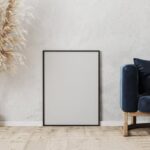Are you looking to bring a little bit of nature into your home? In this article, we will explore the best ways to decorate with plants in your living spaces. From choosing the right plants for your environment to creating beautiful DIY projects and learning how to care for your indoor garden, we will cover it all.
We will also discuss the mental and emotional benefits of having plants in your home. If you want to know how to decorate with plants in home, keep reading.
There are numerous benefits to incorporating plants into your home decor, from improving air quality to reducing stress and enhancing overall well-being. But before diving into creative plant display ideas and exploring different types of plants, it’s important to understand the basic needs of each plant. From lighting requirements to water and maintenance needs, choosing the right plants for your space is crucial for successful decoration.
Once you’ve mastered the art of selecting the perfect plants for your environment, we will delve into creative plant display ideas such as hanging planters, shelving, and wall-mounted options. We’ll also take a look at how you can incorporate greenery into different rooms in your home – from the living room to the bedroom, bathroom, kitchen, and even office spaces.
So whether you’re a seasoned plant lover or just beginning to explore the world of indoor gardening, this article is filled with inspiration and practical tips for decorating with plants in home.
Choosing the Right Plants for Your Space
When it comes to choosing the right plants for your space, there are a few key factors to consider in order to ensure the health and longevity of your indoor garden. Understanding the light, water, and maintenance needs of different plants will help you make informed decisions about which plants will thrive in your home.
Assessing Light Conditions
Before selecting plants for your space, it’s important to assess the lighting conditions in each room. Some plants thrive in bright, direct sunlight, while others prefer low-light environments. Take note of the natural light that enters each room throughout the day to determine which plants will do well in each area.
Water and Maintenance Needs
In addition to light requirements, consider the water and maintenance needs of potential plant options. Some plants require frequent watering and humidity, while others are more resilient and can withstand periods of neglect. It’s essential to match the care requirements of a plant with your lifestyle to ensure that you can provide proper maintenance.
Choosing the Right Plants
Once you have an understanding of the light, water, and maintenance needs of different plants, you can begin choosing the right ones for your space. Consider factors such as air quality improvement, aesthetic appeal, and personal preference when making your selections.
Understanding these elements will empower you with valuable knowledge on how to decorate with plants in home. By strategically choosing plants that are well-suited to your space, you can create a thriving indoor garden that brings beauty and tranquility into your home.
Creative Plant Display Ideas
When it comes to decorating with plants in your home, there are countless creative ways to display them. One popular option is using hanging planters, which not only save space but also add visual interest to any room. Whether you choose macrame hangers or simple hooks, hanging plants can bring a touch of nature into your living space without taking up valuable floor or shelf space.
Another stylish way to showcase your plant collection is by using shelving specifically designed for displaying plants. These shelves often feature multiple tiers, allowing you to create a mini indoor garden while keeping your surfaces clutter-free. By mixing different types of plants and incorporating decorative pots or plant stands, you can create an eye-catching display that adds personality and charm to any room.
For those looking to make a statement with their indoor greenery, wall-mounted plant options provide a unique and visually appealing solution. From living walls consisting of multiple plants installed on a vertical surface to individual wall-mounted planters, there are plenty of ways to use bare walls as a backdrop for your favorite plants. This approach not only serves as an attractive decor element but also allows you to incorporate greenery into rooms with limited floor space.
| Creative Plant Display Idea | Description |
|---|---|
| Hanging Planters | Save space and add visual interest |
| Shelving for Plants | Create a mini indoor garden while keeping surfaces clutter-free |
| Wall-Mounted Plant Options | Utilize bare walls as backdrop for favorite plants |
Incorporating Plants Into Each Room
When it comes to decorating with plants in your home, it’s important to consider the specific needs and aesthetic of each room. Incorporating greenery into different spaces can not only add visual interest, but also create a sense of tranquility and connection to nature.
Living Room
The living room is often the focal point of a home, making it an ideal space for larger statement plants such as fiddle leaf fig trees or tall snake plants. Consider placing smaller potted plants on coffee tables or shelves to add layers of greenery throughout the space. Hanging planters or wall-mounted options can also be a creative way to incorporate plants into your living room design.
Bedroom
In the bedroom, opt for low-maintenance plants such as succulents or peace lilies that can thrive in lower light conditions. A small potted plant on a nightstand or dresser can bring a touch of nature into your personal sanctuary. Consider adding a hanging planter near a window to create a cozy and calming atmosphere.
Bathroom
When choosing plants for the bathroom, it’s important to consider the humidity levels in the space. Opt for moisture-loving plants like ferns, spider plants, or air plants that can thrive in high humidity environments. Display them on shelves, windowsills, or even on wall-mounted planters to take advantage of vertical space.
Kitchen
The kitchen is a great place to incorporate herbs and small edible plants such as basil, mint, or parsley. Not only do they add freshness and fragrance to the room, but they are also practical for culinary use. Consider displaying them on open shelves, windowsills, or in hanging planters above the kitchen sink.
Office Spaces
Bringing greenery into your office space can help reduce stress and boost productivity. Choose low maintenance desk-friendly plants like pothos, philodendron, or snake plant that can thrive in indoor environments with artificial lighting. Consider adding small potted plants on your desk or larger floor plants near bookshelves or seating areas.
Overall, incorporating plants into each room of your home adds natural beauty and creates a sense of well-being. With careful consideration of light levels and maintenance needs for each space, you can enjoy all the benefits that come with bringing nature indoors.
DIY Plant Projects
If you’re looking for creative ways to decorate your home with plants, DIY projects are a fantastic option. One popular choice is creating your own terrarium. These miniature gardens are not only visually appealing but also require minimal maintenance. With the right container, substrate, and choice of plants, you can personalize your terrarium to match your home’s aesthetic.
Another trendy DIY project for plant lovers is making macrame plant hangers. Not only do they add a bohemian touch to any room, but they also free up valuable floor or surface space. Plus, they’re relatively easy to make and can be customized with different types of knots and designs. Whether you prefer simple or intricate patterns, there are countless tutorials available online to guide you through the process.
For those who want to elevate their indoor plant displays, building your own plant stands can be a rewarding endeavor. Whether you opt for sleek and modern designs or prefer a more rustic look, customizing plant stands allows you to showcase your greenery in a way that complements your home decor.
When choosing the right DIY project for your space, consider the amount of time and effort you’re willing to invest as well as the overall style you want to achieve.
| DIY Project | Description |
|---|---|
| Terrariums | Miniature gardens requiring minimal maintenance |
| Macrame Plant Hangers | Adds a bohemian touch and frees up space |
| Plant Stands | Elevates indoor plant displays in various styles |
Designer Tips for Styling With Plants
When it comes to decorating with plants in your home, it’s important to consider how to style them to create visual interest. By mixing shapes, sizes, and textures of plants, you can transform any room into a lush and inviting space. Here are some designer tips for styling with plants:
- Mixing Shapes: Incorporating a variety of plant shapes can add depth and dimension to your space. Consider combining tall, spiky plants with rounder ones or mixing cascading vines with compact bushy plants.
- Varying Sizes: Experimenting with different plant sizes can create an interesting visual dynamic. Try placing small succulents next to larger statement plants or grouping several small potted plants together for impact.
- Playing with Textures: Texture adds another layer of visual interest to your indoor garden. Combine smooth-leaved plants with fuzzy or ruffled foliage for a diverse and captivating display.
By following these tips, you can elevate your home decor with the beauty and vibrancy of indoor plants. Whether you’re decorating a cozy bedroom or a spacious living room, creatively styling your indoor garden will help bring the calming effects of nature indoors while adding a stylish touch to any space.
Furthermore, don’t be afraid to experiment with different plant pairings and arrangements until you find the perfect combination that suits your personal style and complements your home’s aesthetic. With a bit of creativity and thoughtful consideration, you can easily transform any room into an oasis of greenery and natural beauty.
Caring for Your Indoor Garden
Decorating your home with plants can bring a breath of fresh air and natural beauty into your living space. However, caring for your indoor garden is essential to ensure that your plants thrive and continue to add vibrant energy to your home. Proper watering, fertilizing, and troubleshooting common plant problems are important aspects of plant care that every plant parent should master.
When it comes to watering your indoor plants, it’s crucial to understand the specific needs of each plant species. Some plants may require frequent watering, while others prefer their soil to dry out between waterings. Consider creating a watering schedule based on the individual requirements of your plants to help maintain proper moisture levels. Additionally, be sure to use room-temperature water when hydrating your plants and always check the soil moisture before watering.
In addition to regular watering, fertilizing your indoor plants is vital for promoting healthy growth and vibrant foliage. Choose a high-quality, balanced liquid fertilizer specifically formulated for indoor plants and follow the instructions for application carefully. Over-fertilizing can be just as harmful as under-fertilizing, so be mindful not to exceed the recommended feeding regimen for your plants.
Just like any living organism, indoor plants can encounter their fair share of issues such as pests, diseases, or environmental stressors. Keep an eye out for signs of yellowing leaves, wilting stems, or unusual discoloration which may indicate an underlying problem. If you notice any issues arising with your plants, research the specific symptoms and implement appropriate solutions promptly to maintain the health and vitality of your indoor garden.
By mastering how to decorate with plants in home is managing proper watering schedules, providing balanced fertilization and promptly addressing any potential problems that may arise in order decorations will flourish beautifully in every room of your home.
The Mental and Emotional Benefits of Indoor Plants
In conclusion, decorating with plants in your home offers numerous benefits beyond just aesthetic appeal. By understanding the light, water, and maintenance needs of different plants, you can choose the right ones for your space and ensure their longevity. Creative plant display ideas such as hanging planters, shelving, and wall-mounted options can elevate the look of any room while also incorporating nature into your home.
Whether it’s the living room, bedroom, bathroom, kitchen, or office space, there are endless opportunities to incorporate plants into each room. DIY plant projects such as terrariums, macrame plant hangers, and plant stands can also be a fun way to personalize your indoor garden. Additionally, by following designer tips for styling with plants-such as mixing shapes, sizes, and textures for visual interest-you can create an inviting and harmonious atmosphere in your home.
Caring for your indoor garden is crucial for its success. From watering and fertilizing to troubleshooting common plant problems, proper care will ensure that your plants thrive. Finally, it’s important to recognize the mental and emotional benefits of indoor plants as well.
By reducing stress, improving air quality, and creating a connection to nature within your home environment through the presence of plants, you can truly transform your space into a tranquil retreat. So why not give it a try – see how to decorate with plants in home.
Frequently Asked Questions
How to Decorate Your House With Indoor Plants?
Decorating your house with indoor plants can be a great way to bring nature indoors and add a touch of greenery to your space. You can start by choosing the right plants that thrive in indoor conditions and suit the lighting and temperature of your home.
Consider using decorative pots and planters to complement your existing decor. Grouping different plants together can create an interesting visual impact, and placing them in strategic locations, such as near windows or in empty corners, can help liven up the space.
How Can I Decorate My Place With Plants?
If you’re looking to decorate your place with plants, there are several ways to go about it. Start by assessing the natural light and humidity levels in different areas of your home to determine which plants will thrive best in each space.
Select plants of varying sizes, shapes, and textures to create visual interest, and consider hanging pots or wall-mounted planters if you’re short on floor space. Integrate plants into your existing decor by choosing pots and plant stands that complement your interior style.
How Should I Arrange My Living Room With Plants?
When arranging your living room with plants, it’s important to consider the layout of the space and how the plants will interact with other elements such as furniture, artwork, and lighting. Use larger statement plants as focal points in empty corners or beside key pieces of furniture like sofas or armchairs.
Smaller potted plants can be grouped together on coffee tables or shelves for added visual appeal. Consider using hanging planters near windows or from ceiling hooks to maximize vertical space while adding a sense of depth to the room’s design.

I’m thrilled to be your companion on this exciting journey through the world of home decor and design. With a passion for turning houses into homes and a keen eye for the finer details, I’m here to help you transform your living spaces into beautiful, functional, and meaningful havens.





